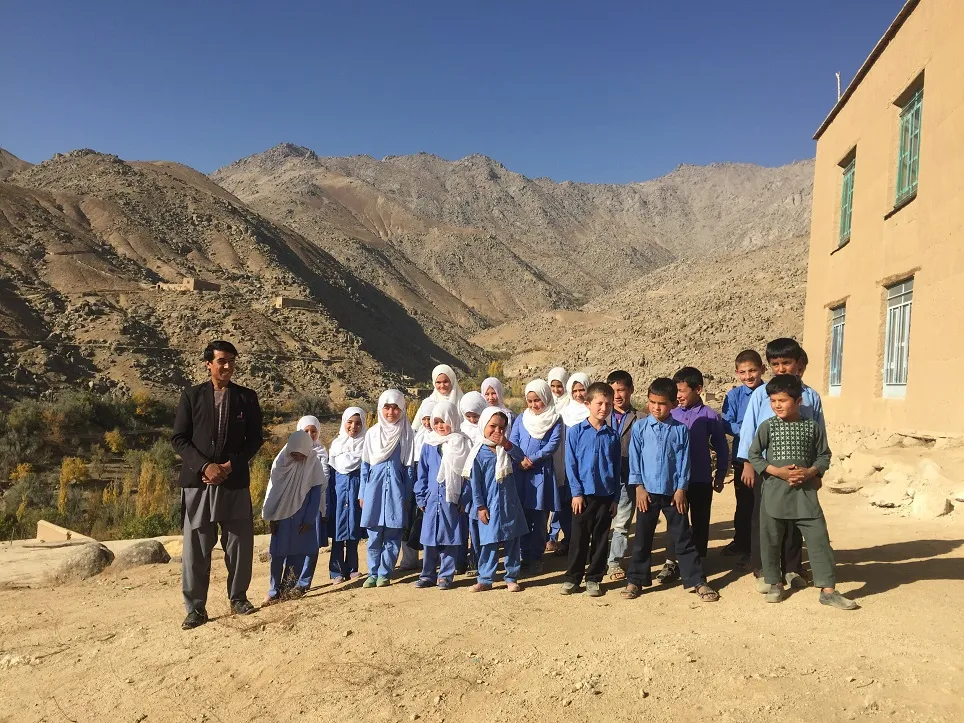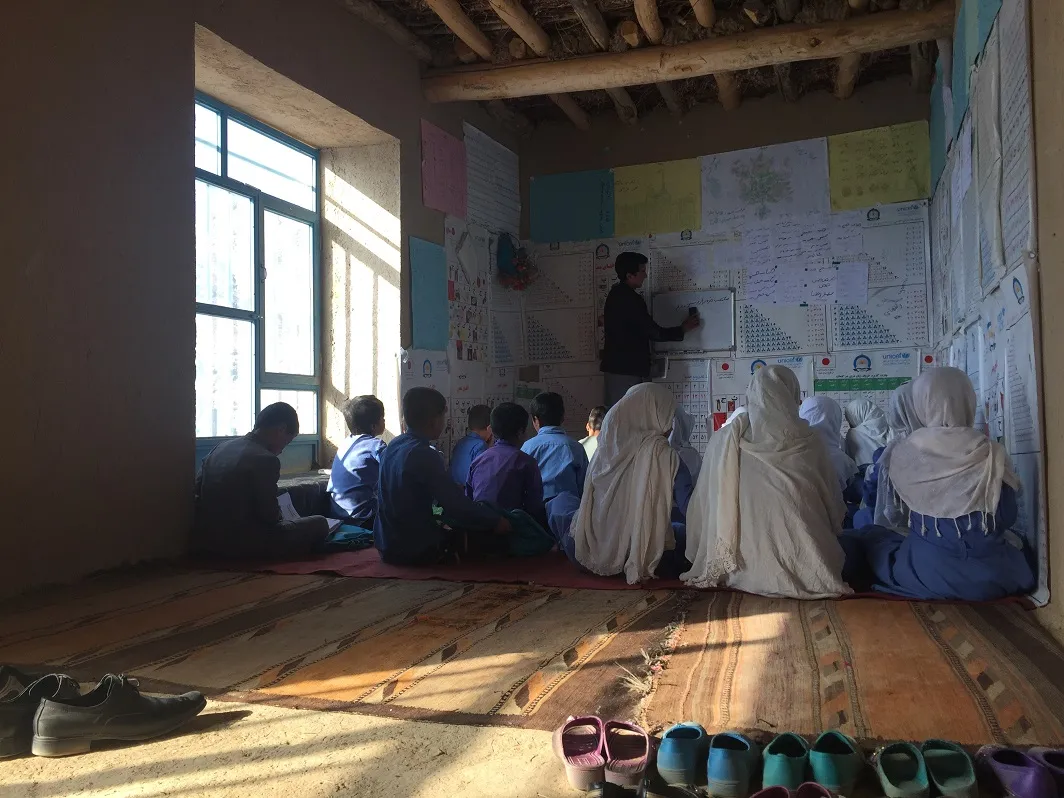Toby Fricker is a Communication Specialist working as part of the Emergency Response Team, providing support on communication and advocacy in humanitarian preparedness and response.
Girls’ education is one of the most powerful investments that can be made to help break cycles of poverty and violence. It can be a turning point for women’s empowerment and the long-term health, peace and prosperity of entire communities and countries. Click here to learn how Canada can play an active role for girls education in crises at the G7 in Charlevoix.
The story of Belqees
Belqees always dreamt of going to school. “My friends would come back to the village and talk about school, what they had been doing,” the 16-year-old says. “I felt like, they are my friends, why am I behind?”
At her home, in a remote village in Daykundi, a province in Afghanistan’s central highlands, Belqees explains how she can’t get to school because it’s too far away. Her parents don’t have a motorbike, or spare cash for transport, but they do recognize the importance of education.
That’s how Belqees got the class to come to her house.
Community-based education — opening learning to girls
Inside a room in Belqees’s home, letters of the Dari alphabet and colorful drawings cover the walls. Fifteen children sit on the floor watching attentively as the teacher writes another word on the board.
“I complained to my parents, what hope is there if we can’t learn?” Belqees explains. “So I pushed him [Hassan, her dad] to give some room.”
This is now one of Afghanistan’s more than 4,300 community-based education spaces. With UNICEF support, these classes are helping some 81,000 girls to learn, and where possible, to transition to formal school.
“You have to start within your own house to show others that you believe in education,” says Belqees’s mother, Fatima. “Then others will follow,” she adds.
Fatima wished she’d had the chance to go to school, so now she supports Belqees, her sisters and their peers to keep learning. “Myself, my mother, my grandmother, we had no education, so no opportunities to do other things in life,” she says.
In a country where girls make up 75 per cent of the 3.5 million children out of school, community-based education is providing hope for girls who are desperate to learn.
Girls’ education is everyone’s business
Across the barren valley and on the other side of Nili, the largest town in the area, we meet 21-year-old Sadiq. He’s teaching at another community-based education space that holds classes in a room of the local council building.
Sadiq moved from neighbouring Bamiyan province, a 12-hour drive away, to live and teach here. “I realized teaching is very important for the community, to give children a proper foundation in life,” he says.
“The good thing here is that I see a lot of girls coming to class, compared to boys. Parents don’t differentiate between boys and girls.”
When insecurity arises, girls are often the first to stop going to school
But as statistics show, it’s not always that simple. Access to quality educational facilities, the ability to stay in school, poor nutrition, parents and society as a whole, all conspire to restrict girls’ right to education and the ability to learn. Insecurity is another ongoing issue. While this area of the central highlands is relatively calm and safe, just 60 kilometres south and north of here, frequent violence plagues the lives of families, leading to regular waves of displacement. When that happens, girls are often the first to stop going to school, as parents prioritize the need to keep them safe over the desire for them to learn.
Three young girls in Belqees’s class are not from the village. They arrived a couple of months ago, fleeing insecurity near their homes. Being back in class provides them with some normalcy and stability in their lives at least; and it helps them to integrate into their new surroundings.
By opening their home, Hassan and Fatima are doing much more than just providing an opportunity for their own daughter to learn. Similarly, Sadiq’s personal sacrifice, of starting a new life far from home, is benefiting the lives and futures of all the children attending his class.
Girls in Afghanistan are ready to learn but they need the support and opportunities to do just that. As the stories of these individual champions for girls’ education show, there is much that can be done to open learning to girls and make a real difference in their lives, for the immediate and long-term benefit of society.



